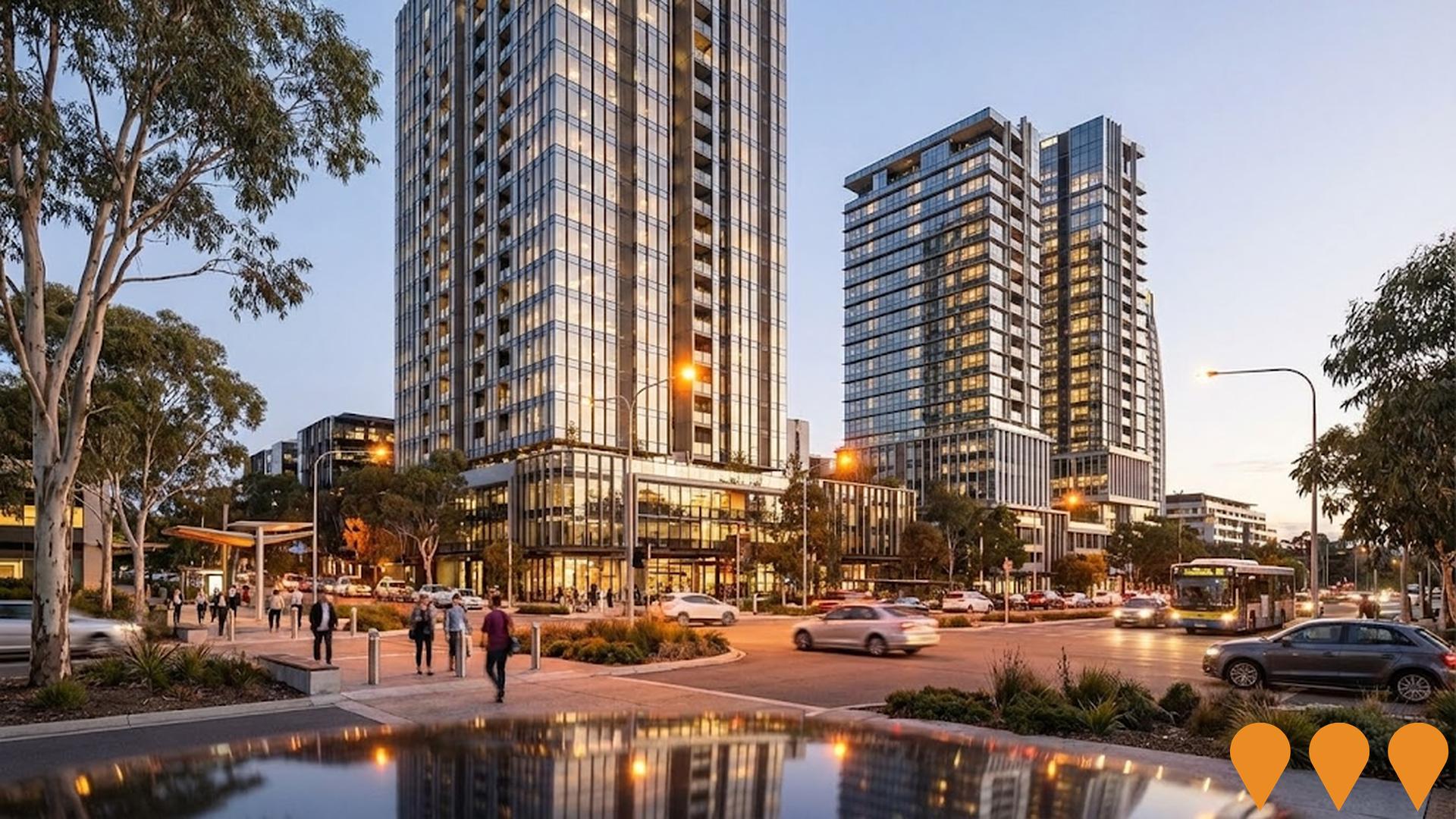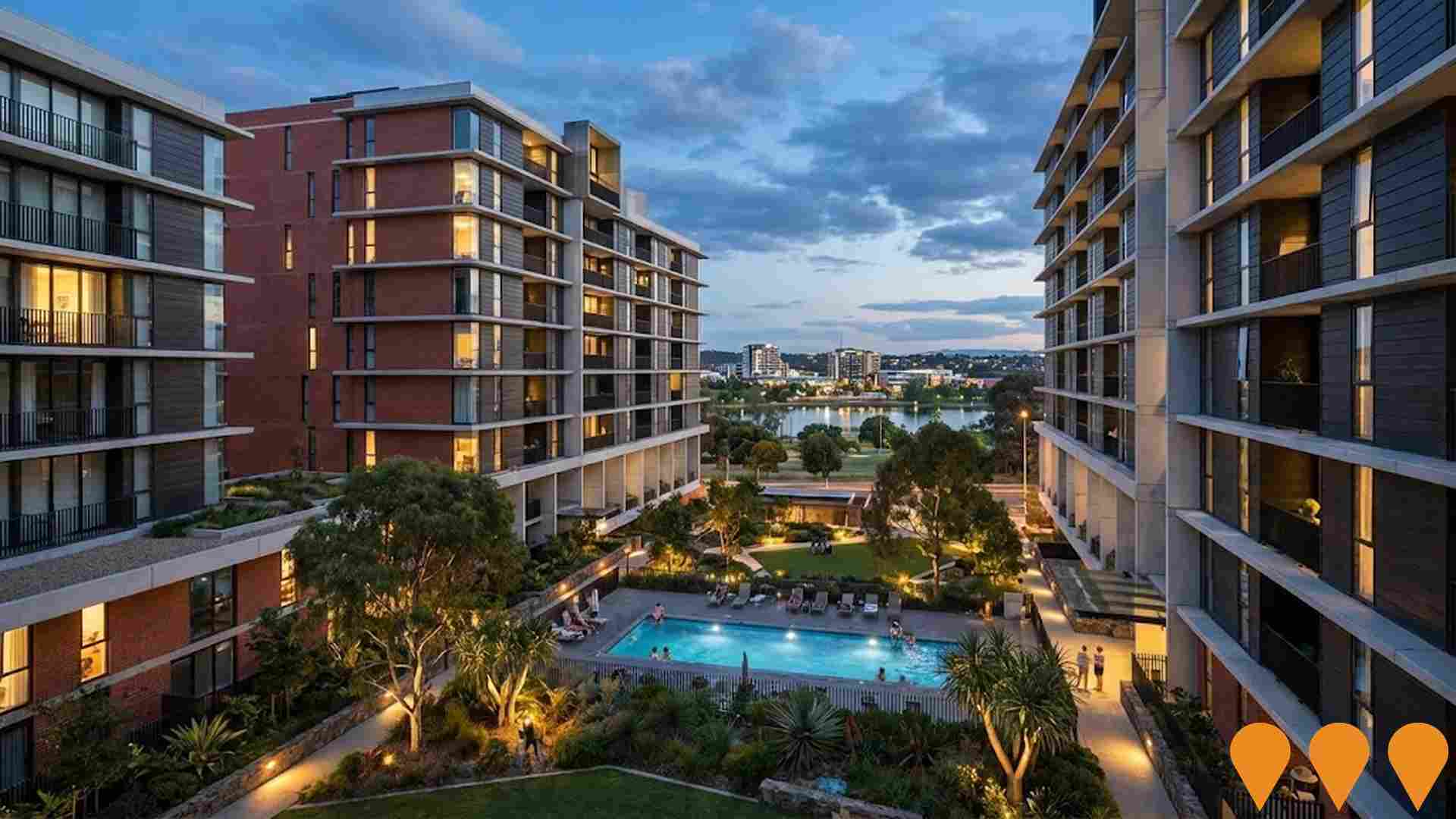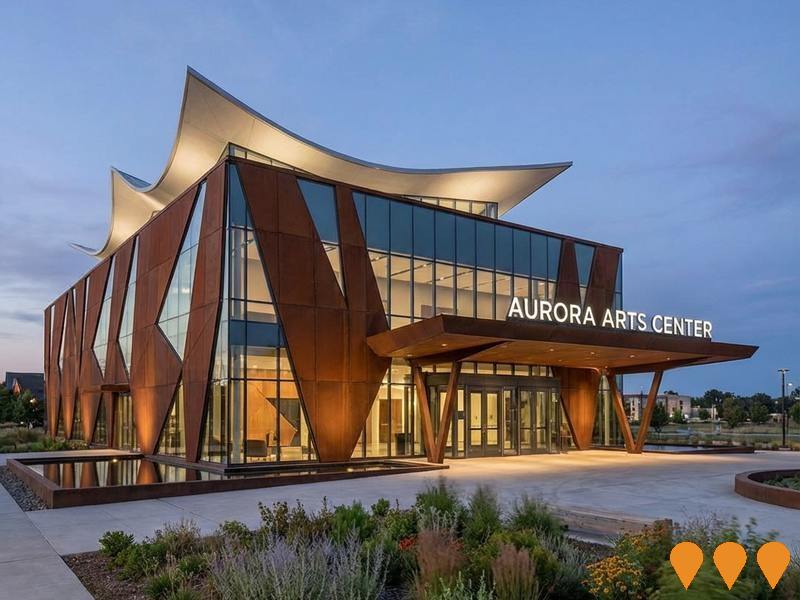Chart Color Schemes
est. as @ -- *
ABS ERP | -- people | --
2021 Census | -- people
Sales Activity
Curious about local property values? Filter the chart to assess the volume and appreciation (including resales) trends and regional comparisons, or scroll to the map below view this information at an individual property level.
Find a Recent Sale
Sales Detail
Population
Page is positioned among the lower quartile of areas assessed nationally for population growth based on AreaSearch's assessment of recent, and medium term trends
Page's population, as per AreaSearch's analysis, was approximately 2,997 by August 2025. This figure represents a decrease of 57 individuals (1.9%) since the 2021 Census, which reported a population of 3,054 people. The change is inferred from the estimated resident population of 2,984 as of June 2024 and an additional 20 validated new addresses since the Census date. This population level equates to a density ratio of 2,270 persons per square kilometer, surpassing the average seen across national locations assessed by AreaSearch. Population growth in the area was predominantly driven by overseas migration, which was the primary driver of population gains during recent periods.
AreaSearch employs ABS/Geoscience Australia projections for each SA2 area, released in 2024 with a base year of 2022. For areas not covered and years post-2032, age group growth rates from the ACT Government's SA2 area projections, also using 2022 as a base, are adopted. Looking ahead, population projections indicate an increase just below the median of national statistical areas by 2041, with the area expected to grow by 174 persons, recording a gain of 5.3% over the 17-year period.
Frequently Asked Questions - Population
Development
AreaSearch assessment of residential development drivers sees a low level of activity in Page, placing the area among the bottom 25% of areas assessed nationally
Page has averaged approximately 10 new dwelling approvals annually over the past five financial years, with a total of 54 homes approved between FY21 and FY25. No approvals have been recorded so far in FY26. Despite population decline during this period, housing supply has remained adequate relative to demand, resulting in a balanced market with good buyer choice.
The average expected construction cost value for new dwellings is $353,000. This year, $2.8 million in commercial approvals have been registered, indicating the area's residential character. Compared to the Australian Capital Territory, Page shows around 62% of the construction activity per person and ranks among the 62nd percentile nationally, reflecting its maturity and possible planning constraints. New building activity is split evenly between detached houses (50%) and townhouses or apartments (50%), offering affordable entry pathways for downsizers, investors, and first-time purchasers. This shift from the existing housing stock (currently 70% houses) suggests decreasing availability of developable sites and changing lifestyles requiring more diverse, affordable housing options. With approximately 236 people per approval, Page is considered a low-density area.
By 2041, Page is projected to grow by 160 residents. Given current construction levels, housing supply should meet demand adequately, creating favourable conditions for buyers while potentially enabling growth that exceeds current forecasts.
Frequently Asked Questions - Development
Infrastructure
Page has emerging levels of nearby infrastructure activity, ranking in the 24thth percentile nationally
No factors impact an area's performance more than changes to local infrastructure, major projects, and planning initiatives. AreaSearch has identified zero projects expected to affect this area. Key projects include Belconnen Town Centre Master Plan & District Strategy, Belconnen Lakeshore - Connected Waterfront Precinct, Belconnen Town Centre East Precinct (Republic Phase 2 & Future), and Belconnen Mixed-Use Towers. The following list details those most likely to be relevant.
Professional plan users can use the search below to filter and access additional projects.
INFRASTRUCTURE SEARCH
 Denotes AI-based impression for illustrative purposes only, not to be taken as definitive under any circumstances. Please follow links and conduct other investigations from the project's source for actual imagery. Developers and project owners wishing us to use original imagery please Contact Us and we will do so.
Denotes AI-based impression for illustrative purposes only, not to be taken as definitive under any circumstances. Please follow links and conduct other investigations from the project's source for actual imagery. Developers and project owners wishing us to use original imagery please Contact Us and we will do so.
Frequently Asked Questions - Infrastructure
New Northside Hospital (North Canberra Hospital Redevelopment)
Development of a new major tertiary hospital on the existing North Canberra Hospital campus (formerly Calvary Public Hospital). The project involves an investment of over $1 billion to construct a new state-of-the-art clinical services building, expanded emergency department, and modern inpatient facilities to replace aging infrastructure.
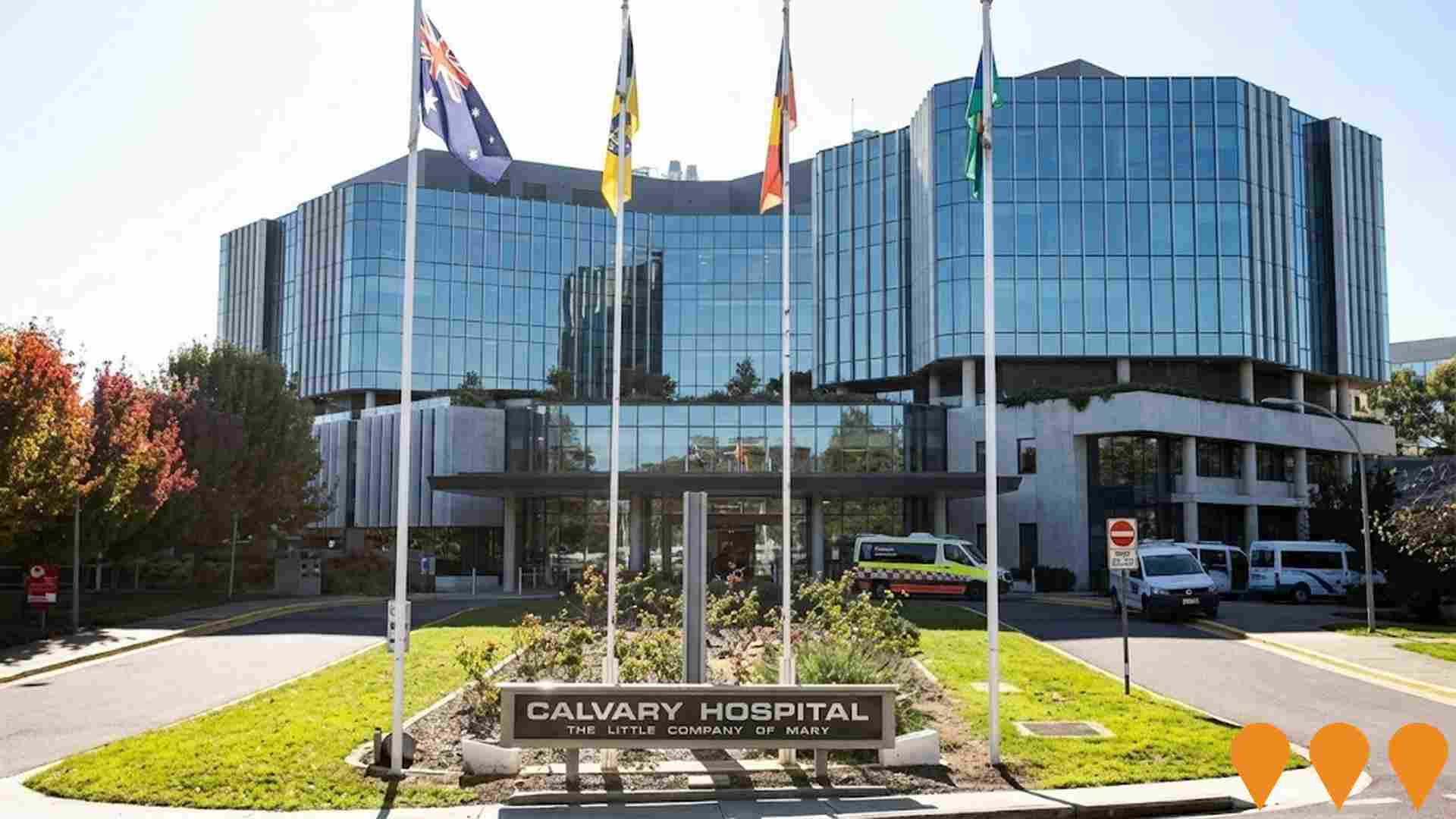
Belconnen Town Centre Master Plan & District Strategy
Ongoing urban renewal of the Belconnen Town Centre guided by the 2023 District Strategy and 2016 Master Plan. Current works focus on the 'Blue-Green Network' with upgrades to Lake Ginninderra's foreshore, Emu Bank, and the implementation of the Southern Gateway Corridor. The project encompasses mixed-use high-density developments, improved pedestrian connectivity, and public transport integration.
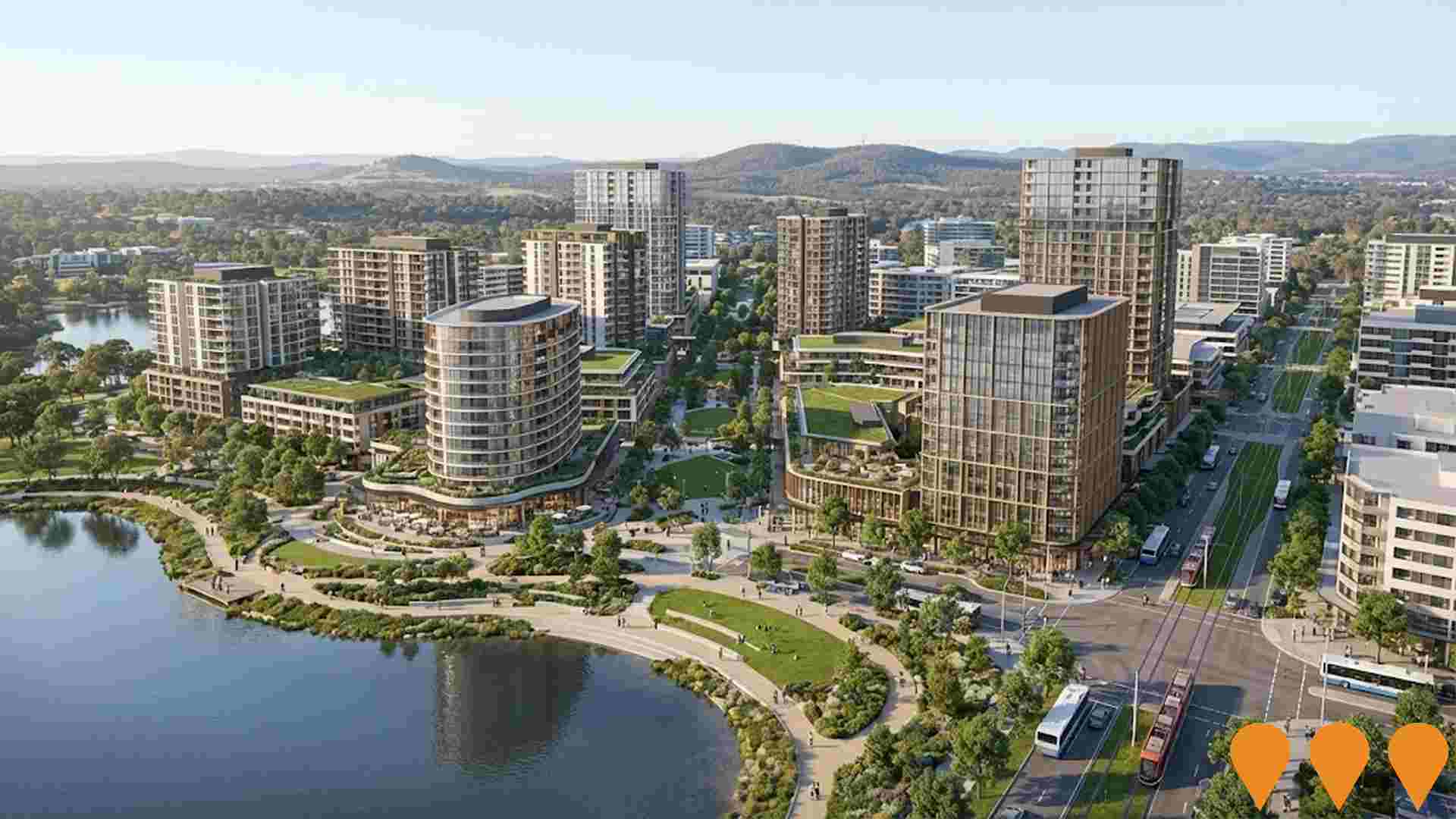
Belconnen Lakeshore - Connected Waterfront Precinct
Belconnen Lakeshore is an ACT Government land release and urban renewal project on the Lake Ginninderra foreshore at Emu Inlet. Guided by the Belconnen Town Centre Place Design Brief, the project will transform four waterfront sites including the Circus Sites Precinct and the former Water Police site into a mixed use precinct with new public waterfront promenades, upgraded open space and taller mixed use buildings stepping up from the lake edge. The Suburban Land Agency has run a two stage tender process for the land release and evaluated tenders, but as at mid 2025 the lakeshore blocks have not yet been sold, with final sale and detailed development design still to be confirmed.

Ginninderry Estate - Stages 4-7 (Strathnairn & future Macnamara)
Canberra's largest master-planned community spanning the ACT-NSW border, delivering approximately 11,500 dwellings total, with ongoing stages immediately adjacent to and west of Dunlop.
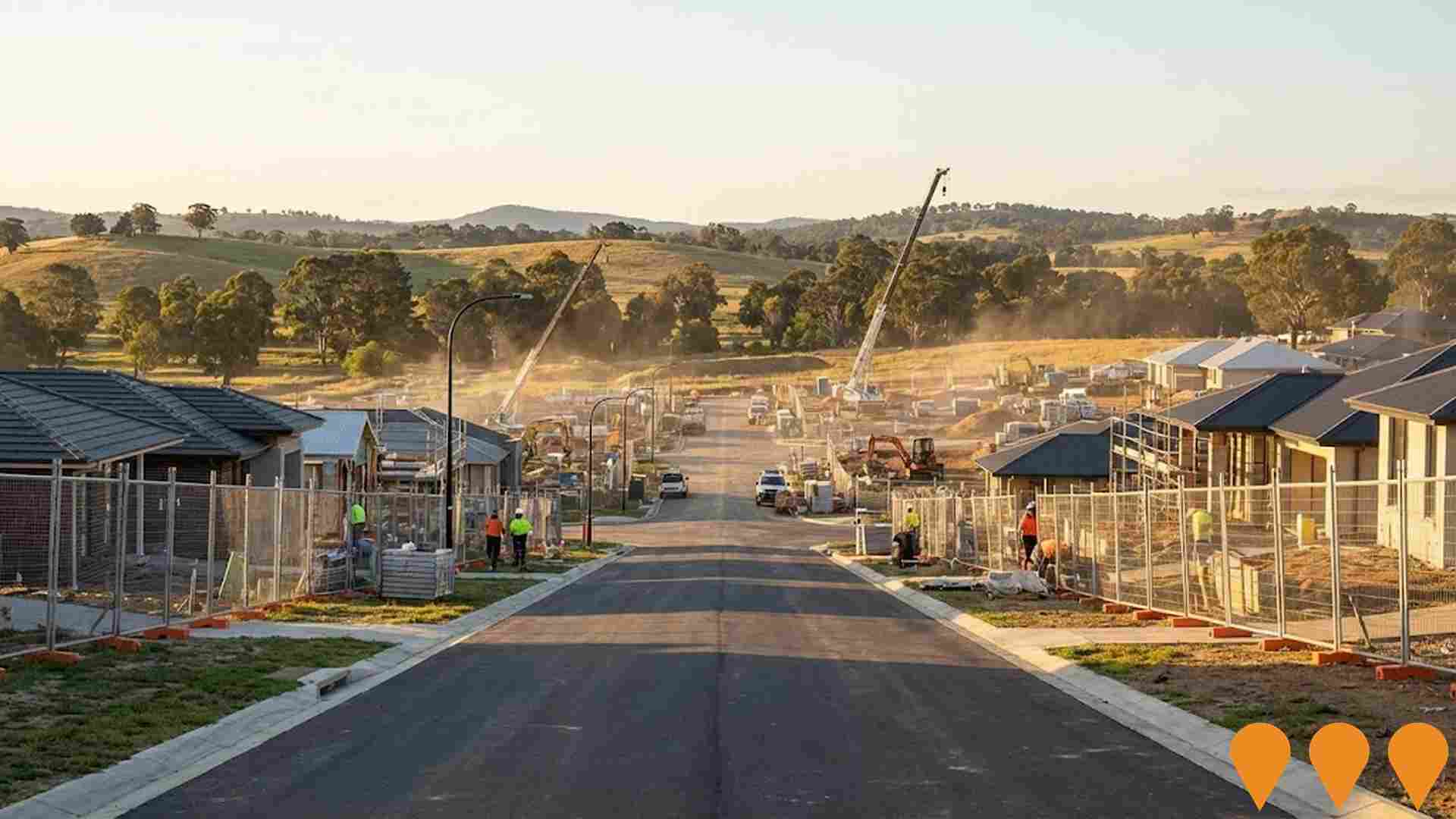
Belconnen Town Centre East Precinct (Republic Phase 2 & Future)
Major mixed-use redevelopment of the former Belconnen Bowling Club site and surrounding land in Belconnen Town Centre (approx. 5 km from Dunlop), delivering apartments, retail, and public spaces.
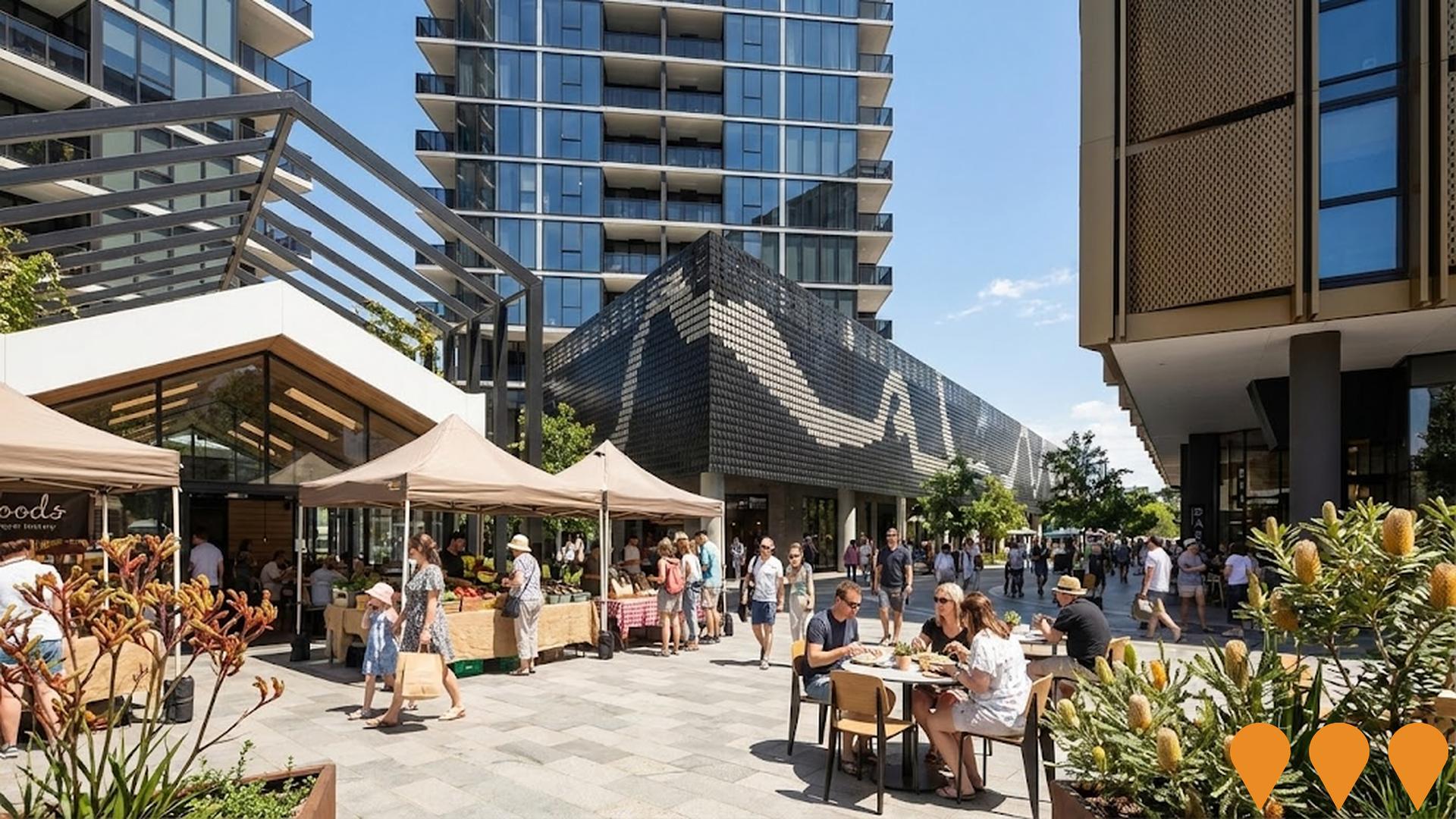
Enhanced bus and light rail corridors (Belconnen & Queanbeyan to Central Canberra)
ACT is progressing an integrated program to enhance high-frequency bus and future light rail corridors that link Belconnen and Queanbeyan with central Canberra. Light Rail Stage 2A (City to Commonwealth Park) commenced construction in early 2025 with services targeted from 2028, while planning and approvals continue for Stage 2B to Woden. The ACT Government has acknowledged and is planning upgrades for the Belconnen-to-City bus corridor as groundwork for a future east-west light rail Stage 3, and is coordinating cross-border public transport initiatives with NSW through the Queanbeyan Region Integrated Transport Plan and the ACT-NSW MoU for Regional Collaboration.
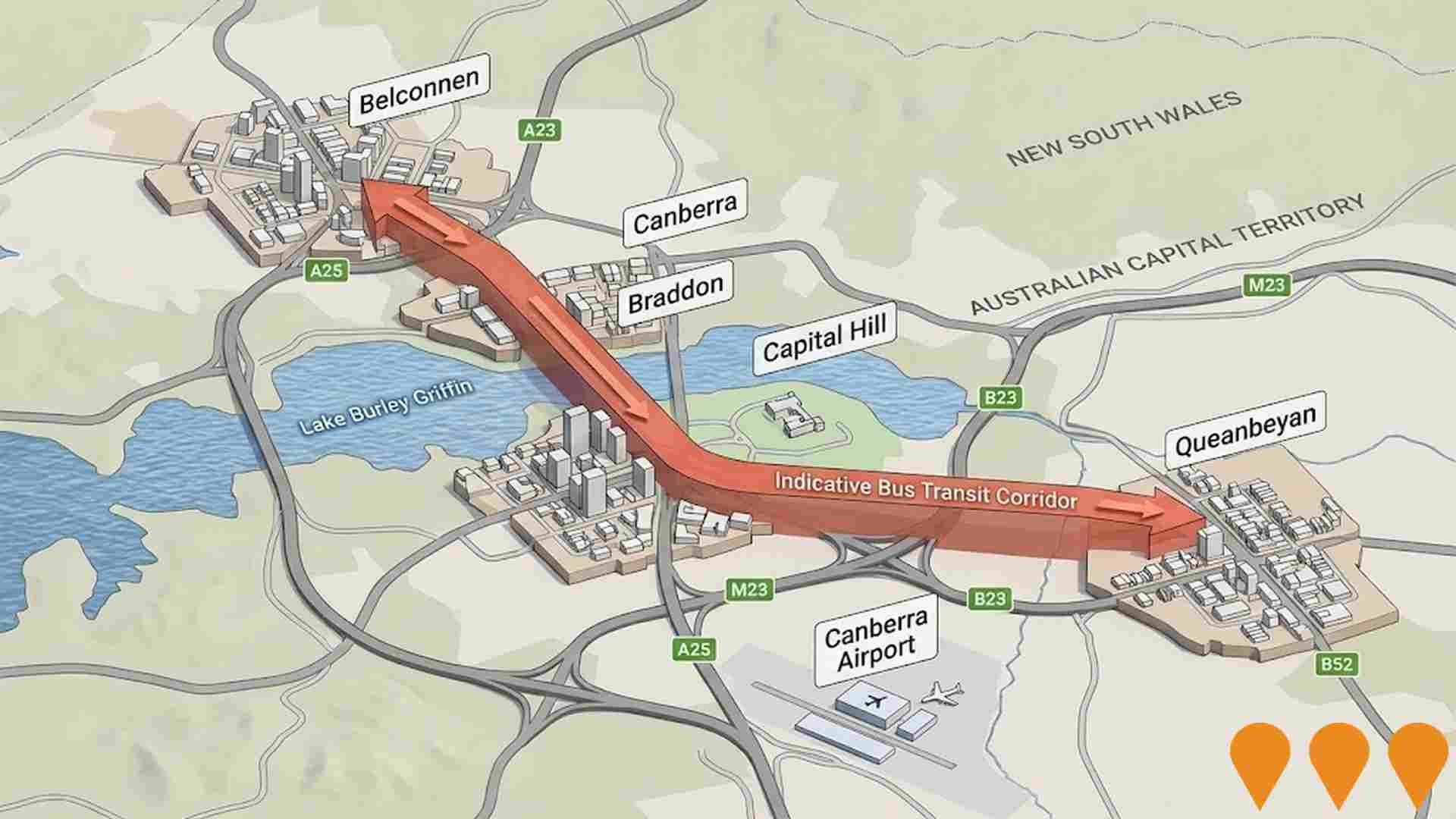
Queanbeyan Regional Integrated Transport Plan
Comprehensive transport planning initiative with 64 key actions for next 10 years. Addresses road safety, active transport connectivity, public transport availability, and future transport needs. Improved connections between Queanbeyan and ACT.
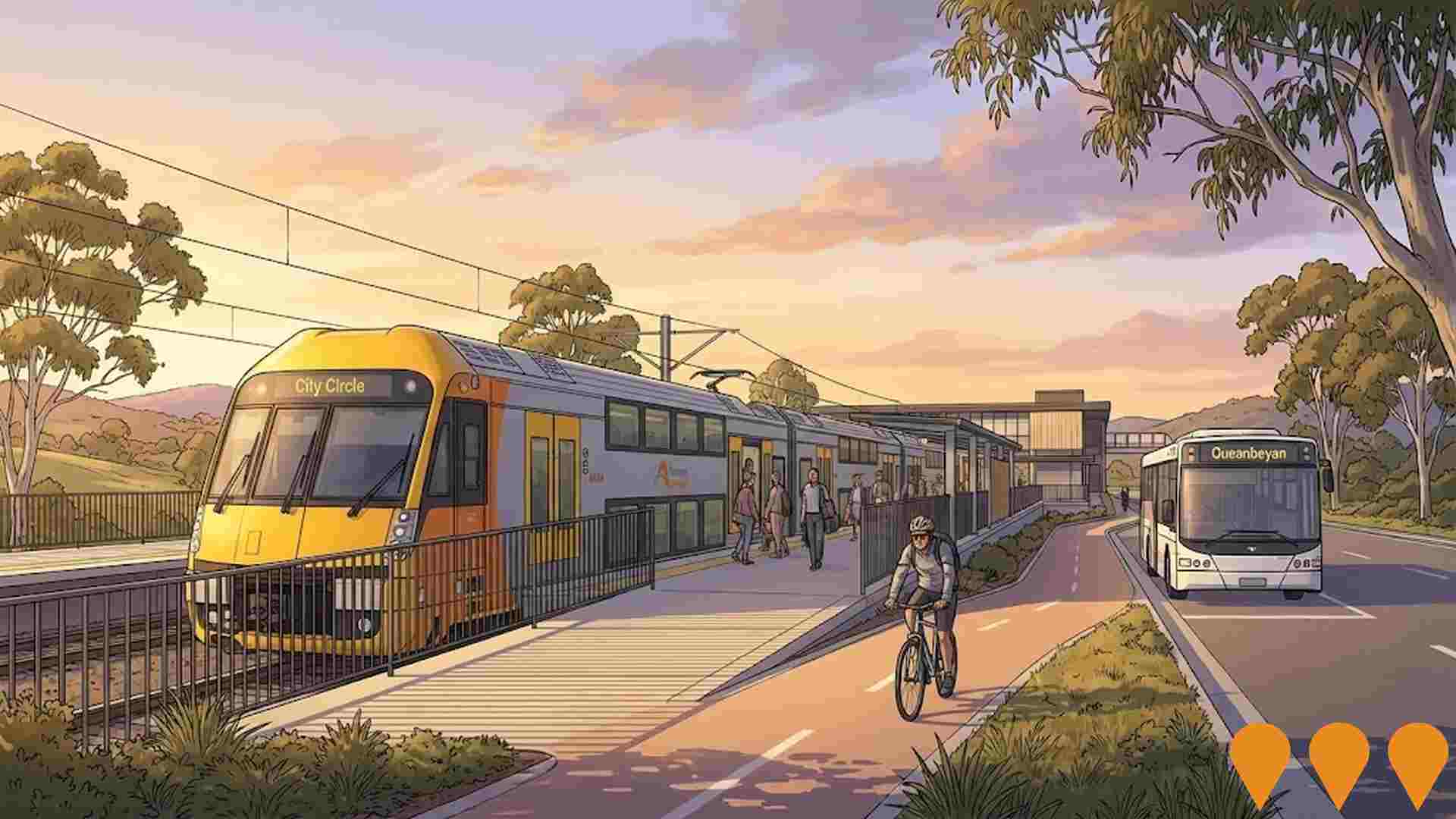
Big Canberra Battery (Williamsdale BESS)
A 250 MW / 500 MWh battery energy storage system at Williamsdale in southern Canberra, delivered by Eku Energy as Stream 1 of the ACT Government's Big Canberra Battery. Construction commenced in November 2024 with partners CPP and Tesla supplying Megapack systems. The asset will connect to Evoenergy's 132 kV network near the Williamsdale substation to provide two hours of dispatchable power, grid services and reliability for the ACT. Target operations in 2026.
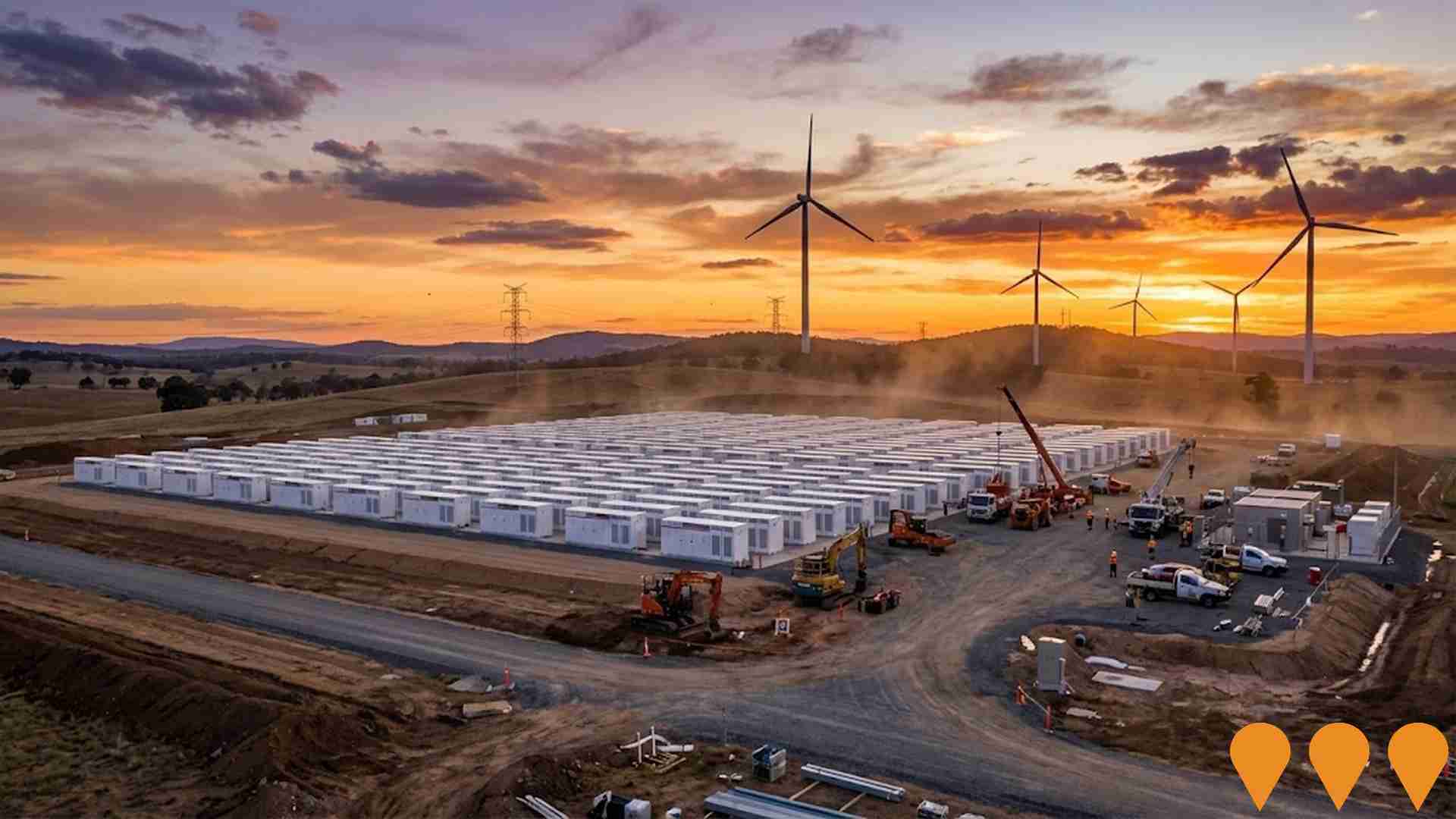
Employment
Page has seen below average employment performance when compared to national benchmarks
The Page area features a highly educated workforce with essential services sectors well represented. The unemployment rate is 4.0%, with an estimated employment growth of 2.1% over the past year as of June 2025.
There are 1,539 residents in work, with an unemployment rate of 4.6%, compared to the Australian Capital Territory's rate of 3.4%. Workforce participation is 56.5%, significantly lower than the Australian Capital Territory's 69.6%. Employment among residents is concentrated in public administration & safety (26.5%), health care & social assistance, and professional & technical services.
Over a 12-month period ending June 2025, employment increased by 2.1% while the labour force grew by 1.6%, causing the unemployment rate to fall by 0.5 percentage points. In contrast, Australian Capital Territory saw employment rise by 1.9%, with the labour force growing by 1.6% and unemployment falling by 0.3 percentage points. Jobs and Skills Australia's national employment forecasts from May 2025 project national employment growth of 6.6% over five years and 13.7% over ten years, with varying rates across industry sectors. Applying these projections to Page's employment mix suggests local growth of approximately 6.6%% over five years and 13.5% over ten years.
Frequently Asked Questions - Employment
Income
Income levels align closely with national averages, indicating typical economic conditions for Australian communities according to AreaSearch analysis
According to AreaSearch's aggregation of latest postcode level ATO data released on June 30, 2022, Page had a median income among taxpayers of $52,075 with the average level standing at $65,351. This aligns with national averages and compares to levels of $68,678 and $83,634 across Australian Capital Territory respectively. Based on Wage Price Index growth of 13.6% since June 2022, current estimates would be approximately $59,157 (median) and $74,239 (average) as of September 2025. Census data reveals personal income ranks at the 71st percentile ($932 weekly), while household income sits at the 51st percentile. The earnings profile shows the largest segment comprises 32.6% earning $1,500 - 2,999 weekly (977 residents), aligning with the surrounding region where this cohort likewise represents 34.3%. High housing costs consume 15.9% of income, though strong earnings still place disposable income at the 53rd percentile and the area's SEIFA income ranking places it in the 7th decile.
Frequently Asked Questions - Income
Housing
Page is characterized by a predominantly suburban housing profile, with above-average rates of outright home ownership
In Page, as per the latest Census evaluation, 70.2% of dwellings were houses, with the remaining 29.8% comprising semi-detached homes, apartments, and other types. This is similar to the Australian Capital Territory's distribution of 69.4% houses and 30.5% other dwellings. Home ownership in Page stood at 37.1%, with mortgaged properties making up 28.0% and rented dwellings accounting for 34.9%. The median monthly mortgage repayment in Page was $2,000, aligning with the Australian Capital Territory average, while the median weekly rent was $438, slightly higher than the ACT's $430. Nationally, Page's median monthly mortgage repayments were higher at $2,000 compared to Australia's average of $1,863, and rents were substantially higher at $438 versus the national figure of $375.
Frequently Asked Questions - Housing
Household Composition
Page features high concentrations of group households and lone person households, with a lower-than-average median household size
Family households account for 58.4% of all households, including 24.1% couples with children, 23.6% couples without children, and 10.0% single parent families. Non-family households constitute the remaining 41.6%, with lone person households at 35.0% and group households comprising 6.8%. The median household size is 2.3 people, which is smaller than the Australian Capital Territory average of 2.5.
Frequently Asked Questions - Households
Local Schools & Education
Page shows strong educational performance, ranking in the upper quartile nationally when assessed across multiple qualification and achievement indicators
Educational attainment in Page is notably higher than national averages. As of 2021, 45.6% of residents aged 15 and above hold university qualifications, compared to the Australian average of 30.4%. Bachelor degrees are the most common at 25.9%, followed by postgraduate qualifications (14.6%) and graduate diplomas (5.1%). Vocational credentials are also prevalent, with 25.7% of residents holding such qualifications – advanced diplomas account for 10.1%, while certificates make up 15.6%.
Educational participation is high in Page, with 31.1% of residents currently enrolled in formal education as of the 2021 census. This includes 9.2% in primary education, 7.8% in tertiary education, and 6.3% pursuing secondary education. St Matthew's Primary School serves the local educational needs within Page, with an enrollment of 326 students as of the latest data. The school focuses exclusively on primary education, with secondary options available in surrounding areas. As of 2021, there are 10.9 school places per 100 residents in Page, which is below the regional average of 15.1. Some students may attend schools in adjacent areas due to this discrepancy. The area demonstrates above-average socio-educational conditions, with an ICSEA score of 1094.
Frequently Asked Questions - Education
Schools Detail
Nearby Services & Amenities
Transport
Transport servicing is good compared to other areas nationally based on assessment of service frequency, route connectivity and accessibility
The analysis of public transport in Page shows that there are currently fifteen active transport stops operating within the area. These stops serve a mix of bus routes, with six individual routes providing service collectively resulting in 962 weekly passenger trips. The accessibility to these transport services is rated as excellent, with residents on average located just 174 meters away from their nearest transport stop.
On an average day across all routes, there are approximately 137 trips made, which equates to about 64 weekly trips per individual stop.
Frequently Asked Questions - Transport
Transport Stops Detail
Health
Health performance in Page is a key challenge with a range of health conditions having marked impacts on both younger and older age cohorts
Page faces significant health challenges, with various conditions affecting both younger and older age groups. The private health cover rate here stands at approximately 52%, covering around 1,570 people, compared to the Australian Capital Territory's 57.1%.
The most prevalent medical conditions are arthritis (impacting 11.3% of residents) and mental health issues (affecting 9.8%). Conversely, 58.9% of residents report having no medical ailments, compared to 68.1% in the Australian Capital Territory. In Page, 23.5% of residents are aged 65 and over (705 people), higher than the Australian Capital Territory's 15.3%. The health outcomes among seniors largely align with those of the general population.
Frequently Asked Questions - Health
Cultural Diversity
Page was found to be more culturally diverse than the vast majority of local markets in Australia, upon assessment of a range of language and cultural background related metrics
Page was found to be more culturally diverse than most local markets, with 32.5% of its population born overseas and 25.6% speaking a language other than English at home. The dominant religion in Page is Christianity, comprising 43.4% of the population. Buddhism is overrepresented, making up 4.1% compared to the Australian Capital Territory's 3.0%.
The top three ancestral groups are English (23.8%), Australian (23.1%), and Other (12.2%). Notably, Vietnamese (1.4% vs regional 1.2%), Spanish (0.6% vs 0.5%), and Croatian (0.8% vs 0.8%) groups are also overrepresented.
Frequently Asked Questions - Diversity
Age
Page's population is slightly older than the national pattern
Page's median age is 39, which is higher than the Australian Capital Territory figure of 35 and comparable to Australia's median age of 38. The percentage of people aged 85 and over in Page is 6.7%, compared to a lower figure for the Australian Capital Territory. Conversely, the percentage of people aged 15 to 24 in Page is 11.3%. Between 2021 and the present day, the proportion of Page's population aged 15 to 24 has increased from 9.6% to 11.3%, while the proportion aged 35 to 44 has risen from 13.2% to 14.3%. However, during this period, the proportion of people aged 85 and over has decreased from 8.1% to 6.7%. Looking forward to the year 2041, demographic projections indicate significant changes in Page's age structure. The number of people aged 85 and over is expected to grow by 54%, reaching 310 from a starting point of 201. This growth will contribute significantly to the overall increase in the population aged 65 and over, which is projected to comprise 59% of Page's total population growth by 2041. In contrast, the populations of children aged 0 to 4 and young people aged 5 to 14 are expected to decrease.
